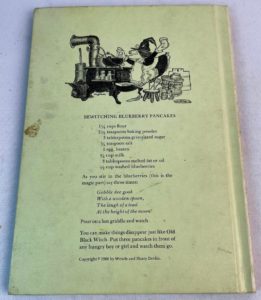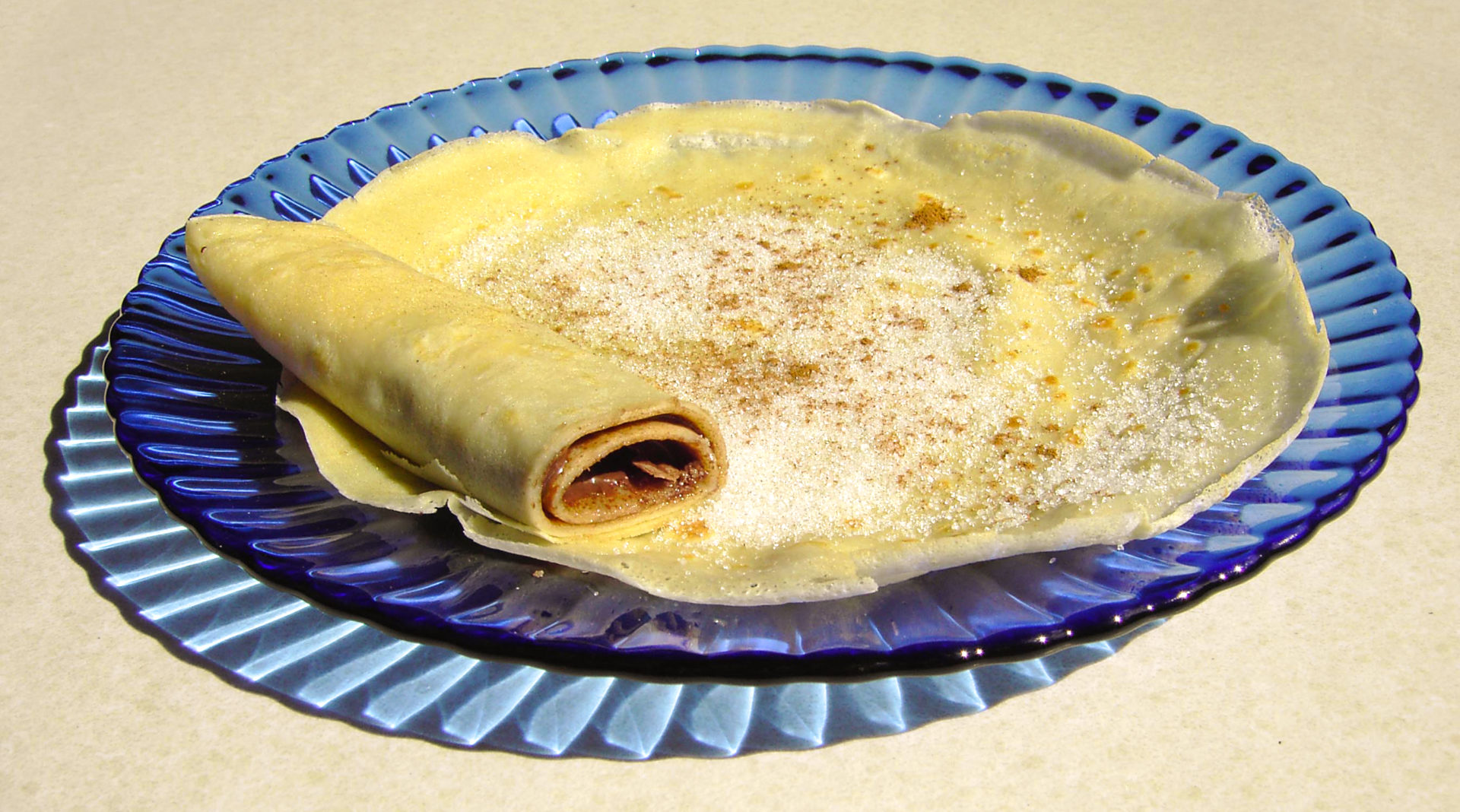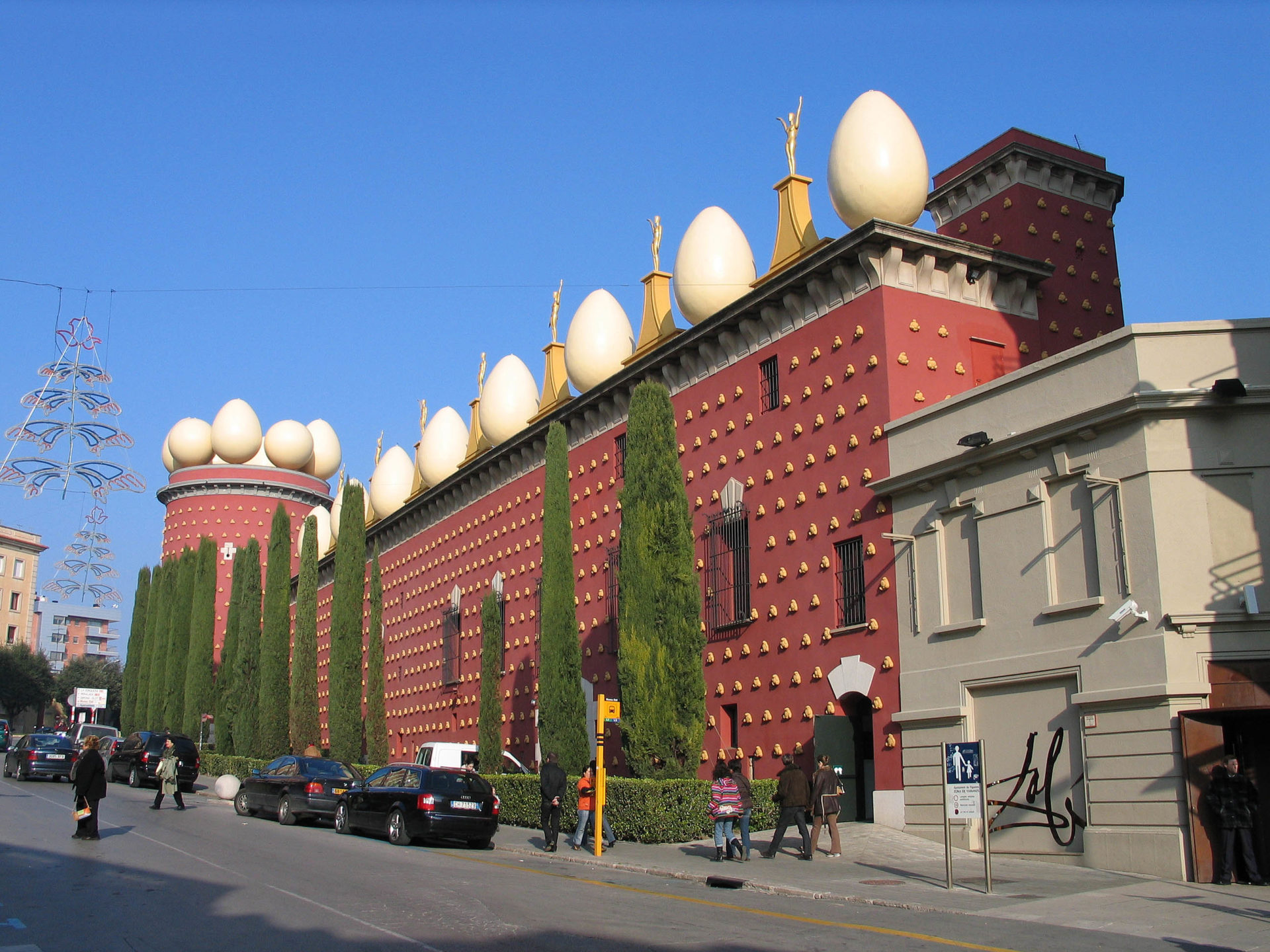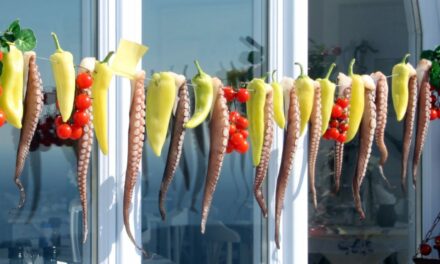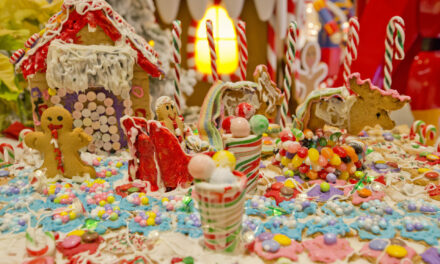Pancake Tuesday, and Beyond
with Lorette C. Luzajic
“Vpon euery Shroue tuesday, at the sound of the pancake bell: my fine dapper Assyrian lads, shall clap vp their shop windows, and away. This is the day, and this day they shall doot, they shall doot.”
The Shoemakers Holiday, Thomas Dekker, 1600
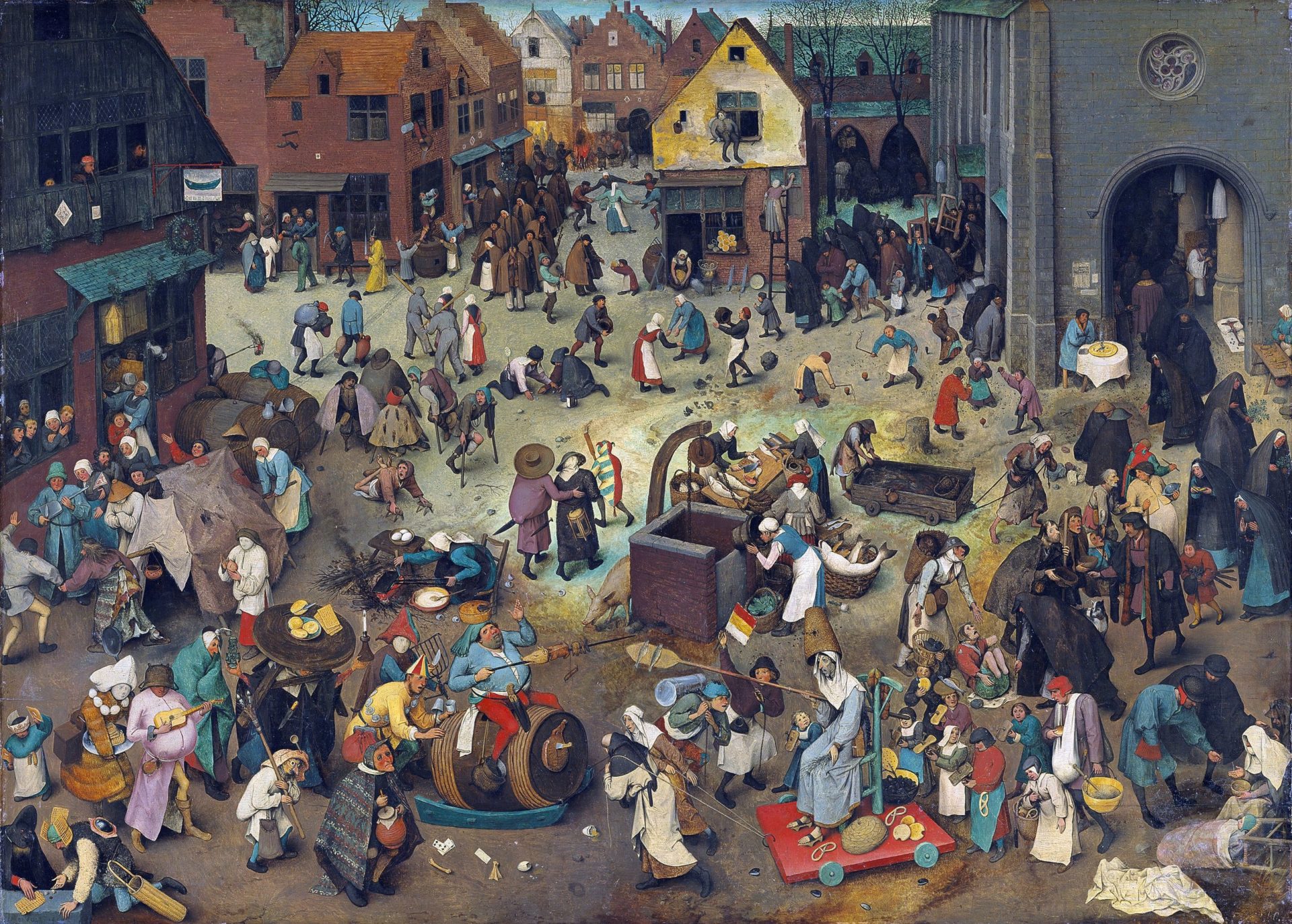
The Battle Between Carnival and Lent, by Pieter Bruegel (Netherlands) 1559
A man vomits from the upstairs window of a tavern, and in the streets below further merriment ensues: a man is passed out on the booze barrels, and revellers in masquerade drink, fight, and gamble. Others gather around the bonfire, and assorted lepers and amputees beg for mercy and alms.
Across from the tavern and other dens of iniquity, the faithful and a few nuns enter a church for prayer. The industrious and the merciful work outside to draw water from a well and to cook fish.
And everywhere in the streets, there are pancakes and waffles. One guy who is playing at dice has several waffles tied to his head!
The painting, a Pieter Bruegel masterpiece from 1559, depicts The Battle Between Carnival and Lent.
Otherwise known as Pancake Tuesday.
Hopefully you’re indulging today in a steaming stack of sensational slapjacks. Who doesn’t love pancakes? The world’s favourite breakfast is simple at heart: something like eggs, flour, sugar, butter and cream, blended into a runny batter, and cooked quickly on a sizzling skillet. This combination can be paired with an array of spices, fruits, syrups, or nothing at all.
Locals of Ontario and Quebec, of course, and other North Americans can’t imagine pancakes without a drizzle from the sap of the maple tree, ever since the 16th century when settlers were introduced to the joys of the “sugar bush” by the Algonquin peoples. The flavour profile became so popular it was infamously imitated by Aunt Jemima and other brands, a gooey corn syrup concoction with no real maple in it.
But pancakes are not synonymous with maple syrup topping. Long before this, pancakes went with molasses, marmalade, whipped cream, butter, or sugar. Fruits, nuts, and even chocolate spreads are popular toppings. English Pancake Tuesday traditions use confectioner’s sugar with sprinkles of lemon. My Oma’s eierkuchen were the best you can have, in my humble opinion- Mennonite style, thin and pan-sized, spread with butter and sprinkled with cinnamon sugar, then rolled up and cut into pinwheels.
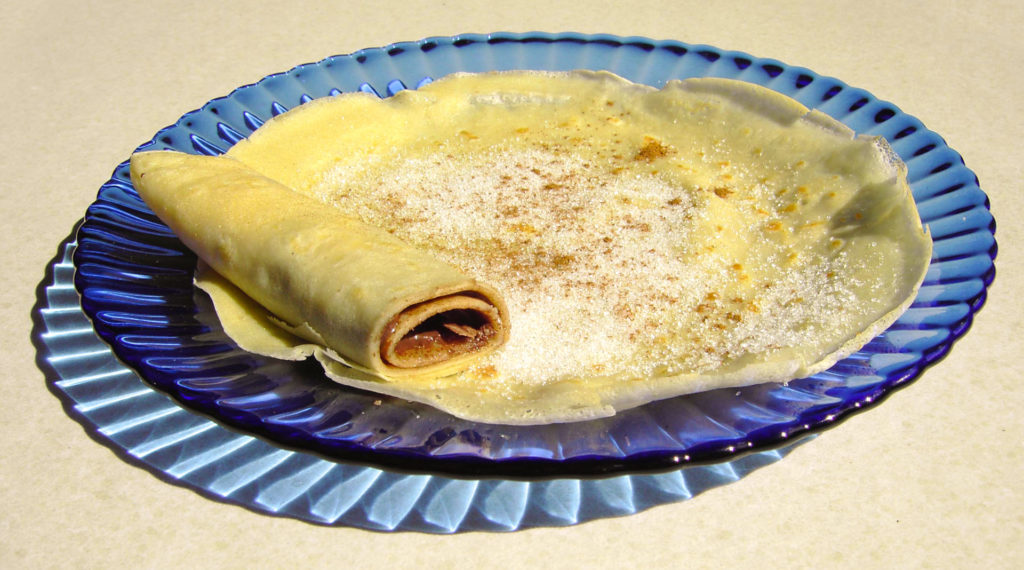
Eierkuchen Oma Syle with Cinnamon and Sugar
Unless you routinely contemplate Bruegel’s Battle painting, you may not make the connection between the rumoured raucous debauchery of Bourbon Street in New Orleans, or the fantastical costumes of Carnaval in Brazil and beyond, and all that booze, with the strange sprinkling of pancake church breakfasts that crops up this time of year. But Mardi Gras and Pancake Tuesday are one and the same!
Historically, Pancake Tuesday is the day of feasting, before Lent begins with Ash Wednesday. Also called Shrovetide, Pancake Week is the time for sin and indulgence, before seeking to be shriven, or absolved of your sins. Lent is a lengthy period of confession, reflection, sacrifice, charity, and abstinence, until Easter is celebrated six weeks later.
Legend holds that Shrove Tuesday became known as Pancake Tuesday in the 15th century, when a housewife from Olney, Buckinghamshire was so busy making pancakes that she didn’t hear the bells calling her to church. To this day, the 11 a.m. Shrove Tuesday reminder dingle is known as “the Pancake Bell.”
But the pancakes became popular centuries before, when Pope St. Gregory prohibited eating animal products before Easter in 600 AD. Pancake variations were a widespread food, and during Shrovetide they were a means of using up the sugar, butter, eggs, and cream before the long Lent fast.
It’s obvious to anyone who has been to Mardi Gras that the parades, costumes, boozing and fornication in the weeks leading up to Ash Wednesday have roots in traditions older than the Catholic church. These are intermingled religious customs with pagan rites of spring. The surprise here may be that even the pancake part of the equation brings ancient rituals to today’s breakfast table. Although written history on the subject is sparse, archeological evidence for Maslenitsa, Slavic cultures’ Eastern Orthodox version of Shrovetide, dates from the second century. This may be the oldest surviving Slavic holiday. Maslenitsa is all about petitioning the gods to banish the evil spirits of winter and bring Spring back into the world. Pancakes were part of it from the beginning: the round, yellow cakes represented the sun! They were left on windowsills for ancestral spirits, and used as burnt offerings in bonfires, too. Feasting on pancakes symbolized taking in the warmth, power, life, and light of the sun.

Maslenitisa, making pancakes in Kiev, photo: spoilt.exile CC BY-SA 2.0 via Wikimedia Commons
This holds a similar syncretism as the recent Crepe Day on February 2. La Chandeleur, or Candlemas, is a day of candles and crepes, celebrating the coming of the light. It’s a minor but longstanding tradition spanning Christian and pagan times. Also known in France as National Crepe Day, the origins of the custom involve the crepe as symbolizing the sun.
Makes one wonder, then, why they are called pancakes, crepes, flapjacks, slapjacks, griddle cakes, hotcakes, johnnycakes, hoecakes, and battercakes. They should be called suncakes!
To follow the suncake back to its birth proves tricky. The flapjack feels like frontier food, for sure- fried over a fire in the snowy woods, not in white chef couture but in lumberjack plaid, with real maple drippings and a whopping pile of bacon on the side. Clearly Canadian!
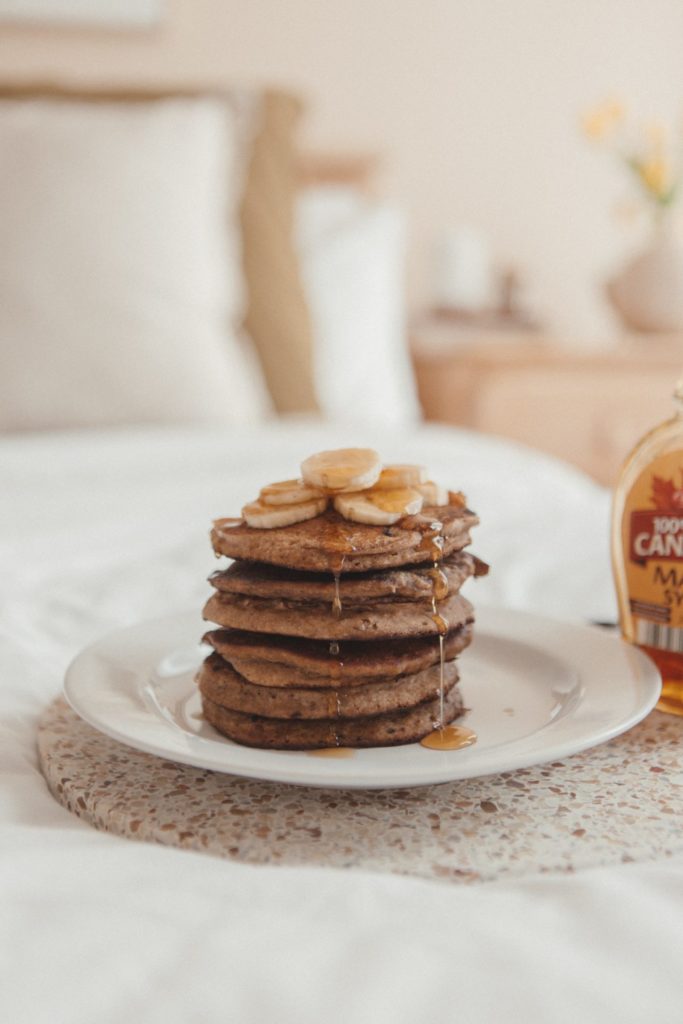
Photo by Maddi Bazzocco on Unsplash
But of course we know that’s not true. Oma brought her eierkucken with her from another world, and the French had their thin style pancakes already, too, upon coming here. Furthermore, pancakes are not a singular concept or origin: most cultures have a version of their own. Where wheat is not commonly cooked or grown, other grains like buckwheat, spelt, millet, oatmeal, rice, teff flour, corn and more is used. Most of us think of pancakes as on the sweeter side, and indeed some cultures view similar foods as a kind of dessert. Others choose savory ingredients.

The Pancake Bakery, by Pieter Aertsen (Netherlands) 1560
Art history is where we can often find clues to the big picture. The proliferation of Flemish paintings show us pannekoeken, food that looks and sounds like our pancakes. But okonomiyaki, from Japan, are pancakes with cabbage, tofu, fish, seaweed and ginger. In Ethiopia, injera is a giant savoury pancake, with a distinctive sourdough flavour from fermented teff, a tiny, high protein grain that grows only in the Ethiopian highlands. Dinner is served atop the injera, and torn bits of injera serve as utensils, too. Kerala, in South India, is rich with bananas and coconuts, and they have delicious pancakes made from these, along with flour, eggs, cardamom, and jaggery, which is the sap not of the maple tree but the palm.
Our first known recorded pancake recipe is from the Greek physician Galen’s De alimentorum facultatibus (On the Properties of Foodstuffs), around 207 CE. The simple ingredients were flour, water, honey, salt and olive oil. They were called tagenias, the name derived from “tagenon,” meaning “frying pan.”
These pancakes were around for much longer, however, having been mentioned several centuries before in ancient Greek poetry, by Cratinus and Magnes.
But our earliest knowledge of pancakes goes back further still. In 1991, a naturally mummified, frozen corpse was found in the Otzal Alps. He was nicknamed Otzi the Iceman. Otzi is 5300 years old, a relic of the copper age. His stomach contained pancake matter. Analysis showed that Otzi’s last supper had included deer, ibex, and ground einkorn wheat with charcoal bits, indicating that the grain had been grilled over charcoal.
Snowcakes, anyone?
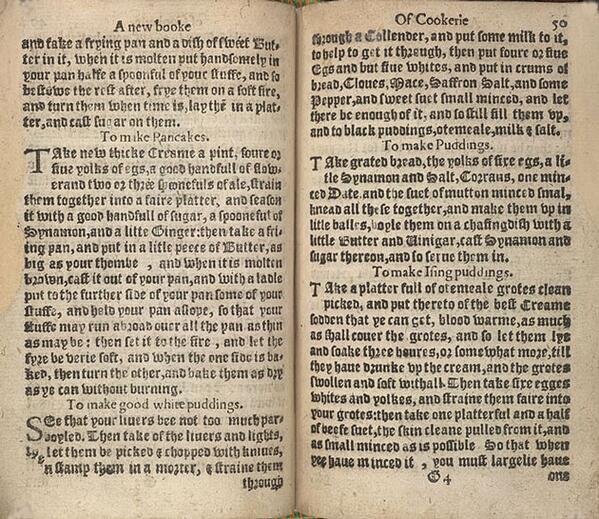
A Gem From The Good Huswifes Jewell, 1585
“Take new thicke Creame a pine, foure or five yolks of egs, a good handful of flower and two or three spoonefuls of ale, strain them together into a faire platter, and season it with a good handfull of sugar, a spooneful of synamon, and a little Ginger: then take a friing pan, and put in a litle peece of Butter, as big as your thumbe, and when it is molten brown, cast it out of your pan, and with a ladle put to the further side of your pan some of your stuffe, and hold your pan …, so that your stuffe may run abroad over all the pan as thin as may be: then set it to the fire, and let the fyre be verie soft, and when the one side is baked, then turn the other, and bake them as dry as ye can without burning.”
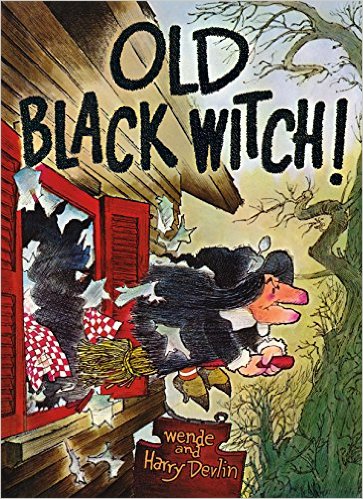
Old Black Witch, by Wende and Harry Devlin, 1966- a favourite childhood book, complete with pancake recipe!
